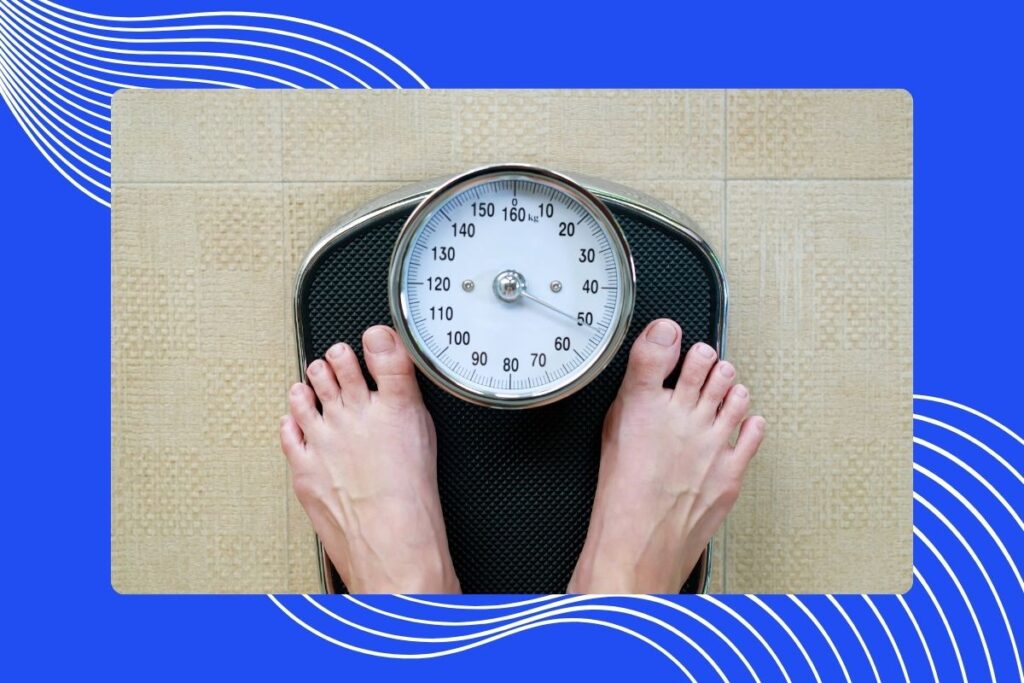Did you know that losing just a small percentage of your body weight can have a significant impact on pain management? Excess weight can place undue stress on your joints, leading to chronic pain conditions such as osteoarthritis and back pain. By adopting effective weight loss strategies, you can alleviate pain, improve mobility, and enhance your overall quality of life. In this blog, we will explore the crucial link between weight and pain, the benefits of weight loss for pain management, and practical strategies to achieve your weight loss goals.
Understanding the Link Between Weight and Pain
Carrying excess weight can have a profound effect on your body, particularly on your joints and overall inflammatory levels.
Stress on Joints
Extra weight adds stress to weight-bearing joints, especially the knees, hips, and lower back. This added stress can accelerate the wear and tear on cartilage, leading to painful conditions such as osteoarthritis. Each pound of excess weight can place additional pressure on the joints, exacerbating pain and discomfort.
Inflammation
Excess fat tissue is not just a passive storage of energy; it actively contributes to systemic inflammation. Adipose tissue releases pro-inflammatory cytokines, which can increase the overall inflammatory burden in the body. This inflammation can further aggravate pain conditions and hinder the body’s ability to heal and recover.
Common Pain Conditions Exacerbated by Obesity
Osteoarthritis
Osteoarthritis is a common condition where the protective cartilage that cushions the ends of your bones wears down over time. Excess weight accelerates this process, leading to increased pain and decreased joint function.
Back Pain
The spine is particularly susceptible to the effects of excess weight. Extra pounds can lead to spinal misalignment, disc degeneration, and increased pressure on the vertebrae. This can cause chronic back pain and sciatica.
Fibromyalgia
Fibromyalgia is a chronic pain disorder characterized by widespread musculoskeletal pain, fatigue, and tenderness in localized areas. While the exact cause of fibromyalgia is unknown, obesity can exacerbate its symptoms by increasing inflammation and stress on the body.
Benefits of Weight Loss for Pain Management
Reduced Joint Stress
Losing weight reduces the stress placed on weight-bearing joints. This can significantly alleviate pain, particularly in the knees, hips, and lower back. For example, losing just 10 pounds can [relieve up to 40 pounds](https://www.arthritis.org/health-wellness/healthy-living/nutrition/weight-loss/weight-loss-benefits-for-arthritis) of pressure from your knees, which can result in significant pain relief and improved joint function.
Decreased Inflammation
Weight loss can help lower systemic inflammation by reducing the amount of adipose tissue that produces pro-inflammatory cytokines. This decrease in inflammation can reduce pain levels and improve overall health. Additionally, a reduction in inflammation can enhance your body’s ability to heal and recover from injuries.
Improved Mobility
Carrying less weight can make it easier to move and perform daily activities. Weight loss can lead to better balance, increased strength, and enhanced flexibility. Improved mobility can also help break the cycle of pain and inactivity, enabling you to engage in more physical activities and further improve your health.
Overall Health Improvement
Weight loss offers numerous health benefits that can indirectly aid in pain management. Improved cardiovascular health, better sleep quality, and increased energy levels can all contribute to a reduction in pain and an improvement in overall well-being. By addressing weight issues, you can enhance your quality of life and reduce the risk of developing other health conditions that may exacerbate pain.
Strategies for Weight Loss
1.Dietary Changes
Balanced Diet
A balanced diet rich in fruits, vegetables, lean proteins, and whole grains is essential for weight loss. These foods are low in calories but high in nutrients, helping you feel full and satisfied while reducing your overall caloric intake. Aim to incorporate a variety of colorful fruits and vegetables into your meals to ensure you’re getting a wide range of vitamins and minerals.
Portion Control
Controlling portion sizes is crucial for managing caloric intake. Eating smaller, more frequent meals can help keep your metabolism active and prevent overeating. Using smaller plates and bowls can also help you control portion sizes without feeling deprived.
Hydration
Staying hydrated is important for overall health and can aid in weight loss. Drinking water before meals can help you feel full and reduce the likelihood of overeating. Aim to drink at least 8 glasses of water a day, and consider replacing sugary beverages with water to cut down on unnecessary calories.
2.Physical Activity
Low-Impact Exercises
Engaging in low-impact exercises can help you lose weight without putting additional stress on your joints. Activities such as swimming, walking, and yoga are gentle on the joints and can improve cardiovascular health, flexibility, and strength. Aim to incorporate at least 30 minutes of low-impact exercise into your daily routine.
Strength Training
Building muscle through strength training can support your joints and improve your metabolism. Strong muscles help stabilize your joints, reducing the risk of injury and pain. Incorporate weight-bearing exercises, such as lifting weights or using resistance bands, into your fitness routine at least two to three times a week.
3.Behavioral Changes
Mindful Eating
Practicing mindful eating can help you develop a healthier relationship with food. Pay attention to hunger and fullness cues, eat slowly, and savor each bite. Mindful eating can prevent overeating and help you enjoy your meals more.
Stress Management
Managing stress is crucial for preventing emotional eating and maintaining a healthy weight. Techniques such as deep breathing, meditation, and regular exercise can help reduce stress levels and improve overall well-being. Consider incorporating these practices into your daily routine to support your weight loss goals.
4.Medical Intervention
Consult with Healthcare Providers
Seeking advice from healthcare providers, such as doctors, nutritionists, or physical therapists, can help you develop a safe and effective weight loss plan. They can provide personalized recommendations based on your health status and goals, ensuring that you achieve sustainable results.
Possible Medications or Supplements
In some cases, medications or supplements may aid in weight loss. Consult with your healthcare provider to determine if these options are appropriate for you. It’s important to use these interventions under professional guidance to avoid potential side effects and interactions with other medications.
Challenges and Considerations
When embarking on a weight loss journey for pain management, several challenges and considerations can arise. Common obstacles include time constraints, which make it difficult to find time for exercise and meal preparation. Planning workouts and meals ahead of time and setting aside specific times each week can help. Maintaining motivation can also be tough; setting realistic goals, tracking progress, and celebrating small victories are effective strategies to stay committed. Additionally, physical limitations, such as joint pain or other medical conditions, can hinder participation in certain exercises. It’s crucial to work with healthcare providers or physical therapists to develop a customized exercise plan that accommodates your needs.
Safety Considerations
When considering safety in your weight loss journey, avoid extreme diets that drastically reduce caloric intake or eliminate entire food groups, as they can be harmful and unsustainable. Instead, focus on making gradual, healthy changes to your diet that you can maintain long-term. Also, listen to your body; if you experience pain or discomfort during exercise or dietary changes, adjust your routine accordingly. It’s crucial to approach weight loss in a way that is safe and respectful of your body’s needs.
Key Takeaways
Weight loss can significantly alleviate pain and improve overall health by reducing joint stress, decreasing inflammation, and enhancing mobility. Adopting a balanced diet, regular physical activity, and mindful behavioral changes are key strategies. Though the journey may be challenging, the benefits are worth it. Start today by consulting a healthcare provider for a personalized plan, and remember, even small changes can lead to big improvements in your well-being.
FAQs
1. How much weight do I need to lose to see a reduction in pain?
Even a modest weight loss of 5-10% of your body weight can lead to significant improvements in pain management. This reduction can relieve stress on weight-bearing joints, decrease inflammation, and enhance mobility, leading to noticeable pain relief and better overall health.
2. What type of exercise is best for losing weight and managing pain?
Low-impact exercises are ideal for weight loss and pain management, as they minimize stress on the joints while effectively burning calories. Activities such as swimming, walking, and yoga are excellent choices. Additionally, incorporating strength training can help build muscle to support joints and improve metabolism.
3. Can diet alone help with weight loss and pain reduction, or is exercise also necessary?
While diet plays a crucial role in weight loss, combining it with regular physical activity provides the best results for pain management. A balanced diet helps reduce caloric intake and inflammation, while exercise strengthens muscles, improves joint function, and boosts overall mobility. Together, they create a comprehensive approach to achieving sustainable weight loss and pain relief.



